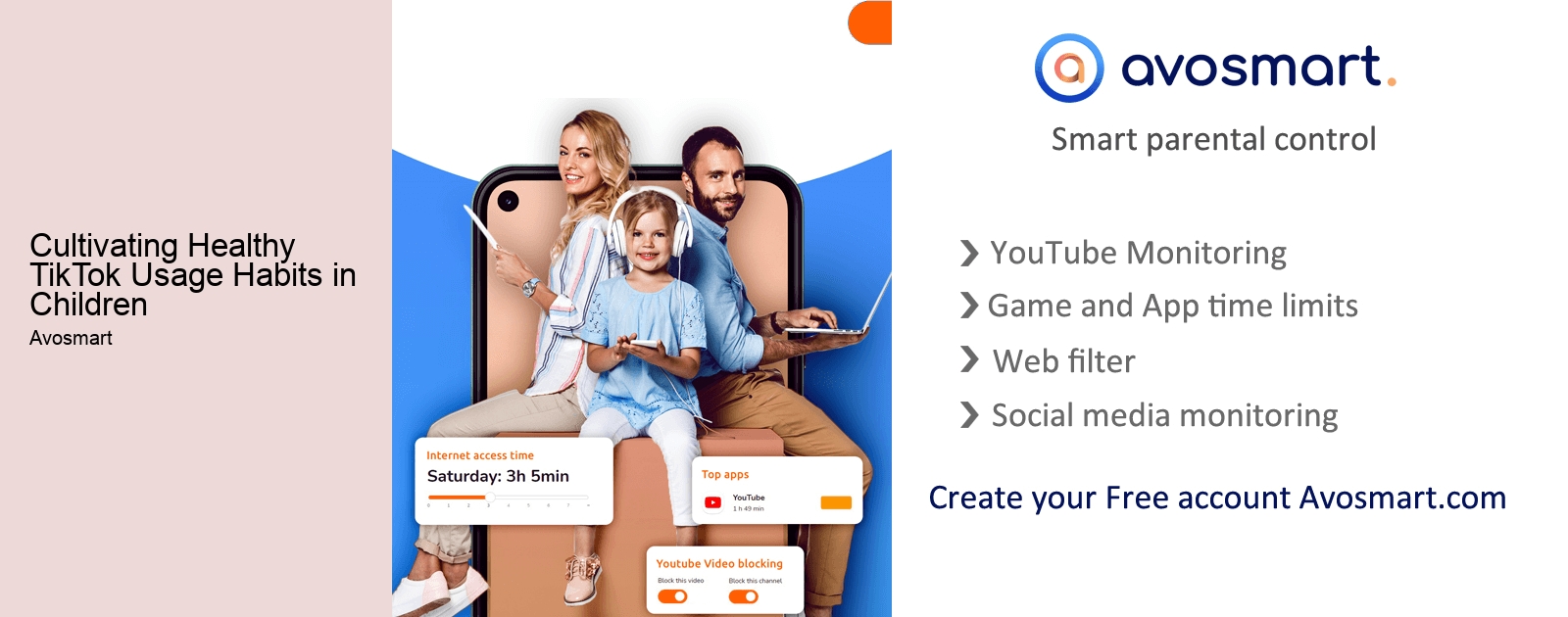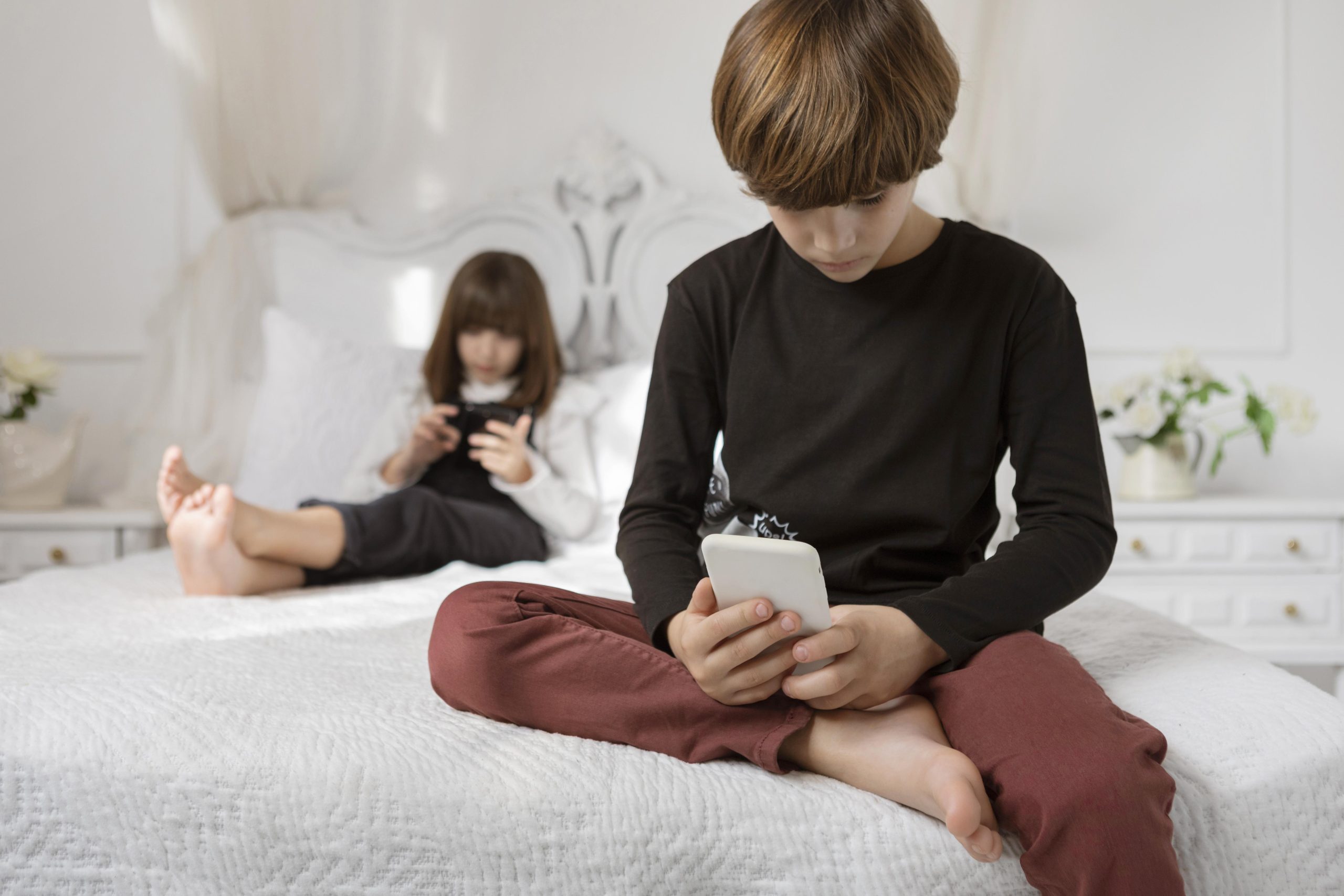
Setting boundaries for TikTok usage in kids is crucial for their well-being. It helps protect them from potential dangers such as cyberbullying, inappropriate content, and excessive screen time. Parents should establish clear rules regarding the amount of time spent on the app, the types of content allowed, and the importance of privacy settings. Regular communication and monitoring are essential to ensure compliance with these boundaries. By setting limits, parents can promote a healthy balance between online and offline activities, foster responsible digital citizenship, and safeguard their children's mental and emotional health.
Promoting a balanced approach to TikTok in children involves setting limits on screen time, encouraging offline activities, and fostering open communication. Parents should educate themselves about the app's features and privacy settings to ensure their child's safety. It's important to discuss the potential risks and consequences of inappropriate content and cyberbullying. Encouraging creativity and self-expression on TikTok can be beneficial, but it's crucial to monitor their online activity and engage in conversations about responsible digital citizenship. Ultimately, finding a balance between enjoying TikTok and maintaining a healthy lifestyle is key.
Alternate Activities and Hobbies for Kids to Reduce TikTok Usage
To foster responsible TikTok behavior in young users, it is important to educate them about online safety and digital citizenship. Parents and guardians should have open conversations with their children about the potential risks and consequences of inappropriate content and interactions on TikTok. Setting clear guidelines and boundaries, such as time limits and privacy settings, can also help promote responsible behavior. Encouraging positive and respectful engagement on the platform, and monitoring their activity, can further ensure their safety. Additionally, staying informed about the latest trends and features on TikTok can help parents guide their children in making responsible choices while using the app.


Excessive TikTok use can have a negative impact on children's well-being. Spending too much time on the app can lead to decreased physical activity, disrupted sleep patterns, and reduced social interactions. It can also contribute to feelings of low self-esteem and body image issues, as children compare themselves to the curated content they see on TikTok. Additionally, excessive use can lead to a decrease in academic performance and productivity. It is important for parents and caregivers to monitor and limit their child's TikTok usage to ensure a healthy balance between online and offline activities.
Promoting digital literacy and critical thinking skills in TikTok users is crucial in today's digital age. With the increasing popularity of the platform, it is important to educate users on how to navigate the online world responsibly. This can be achieved by providing resources and workshops that teach users how to fact-check information, identify fake news, and critically analyze content. Additionally, promoting digital literacy involves teaching users about online privacy, cybersecurity, and the potential risks associated with sharing personal information. By equipping TikTok users with these skills, we can empower them to make informed decisions and contribute positively to the digital community.

Monitoring and managing TikTok content for kids requires a multi-faceted approach. Firstly, parents should set strict privacy settings and supervise their child's account. Secondly, they should educate their child about online safety and responsible social media use. Additionally, parents can utilize parental control apps to monitor their child's activity on TikTok. It is also important for parents to stay updated on the latest trends and challenges on the platform to ensure their child's safety. Lastly, open communication between parents and children is crucial to address any concerns or issues that may arise from using TikTok.
TikTok has implemented measures to encourage positive interactions and ensure online safety for children. They have introduced a Family Pairing feature that allows parents to link their accounts with their child's, giving them control over privacy settings and content restrictions. TikTok also provides resources and educational materials to promote digital literacy and responsible online behavior. They have partnered with organizations like Common Sense Networks to develop safety guidelines and provide tips for parents. Additionally, TikTok has implemented stricter policies to prevent inappropriate content and cyberbullying. These efforts aim to create a safe and positive environment for children on the platform.
TikTok collects data for personalized experiences but has privacy controls to limit data sharing. Review their privacy policy for more details.
Yes, excessive screen time can impact their well-being. Set limits, encourage breaks, and ensure they have a healthy balance between online and offline activities.
Frame the conversation positively, highlighting the benefits of responsible usage and fostering their ability to make informed choices.
Educate your child about not accepting friend requests from strangers and encourage them to only interact with people they know.
Yes, TikTok enforces community guidelines that prohibit explicit, violent, or harmful content, making it safer for children.